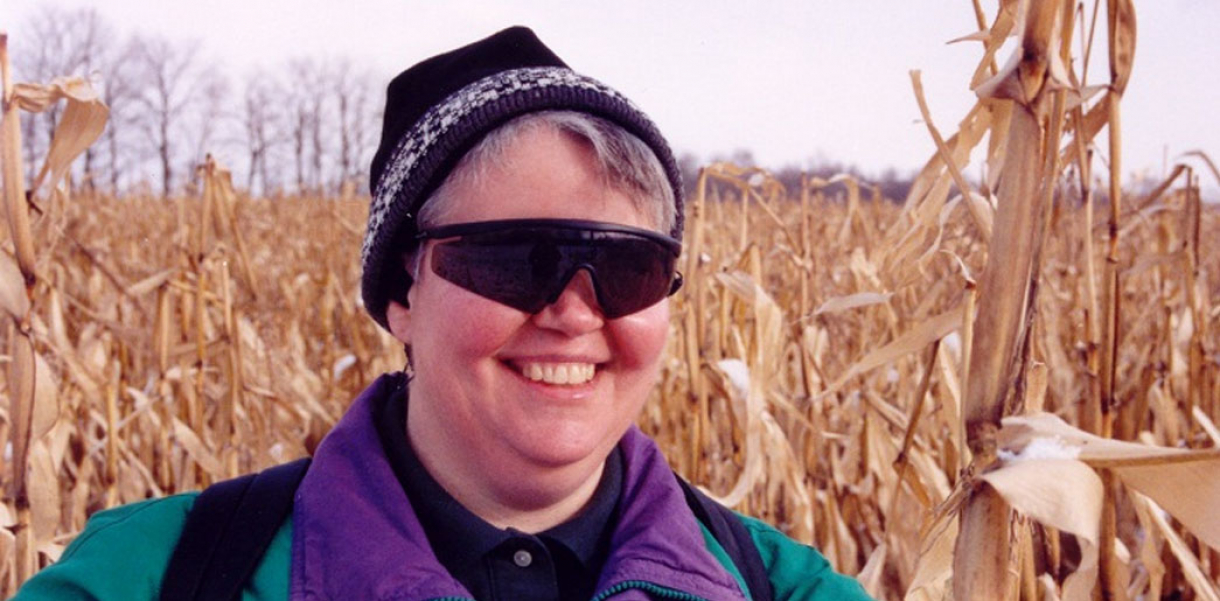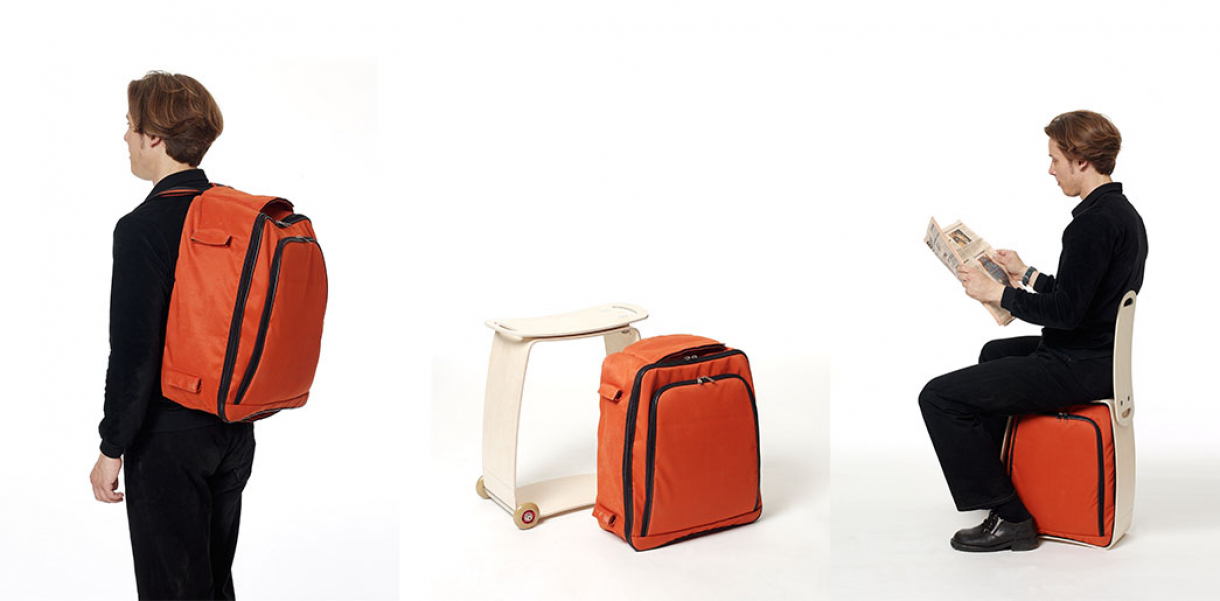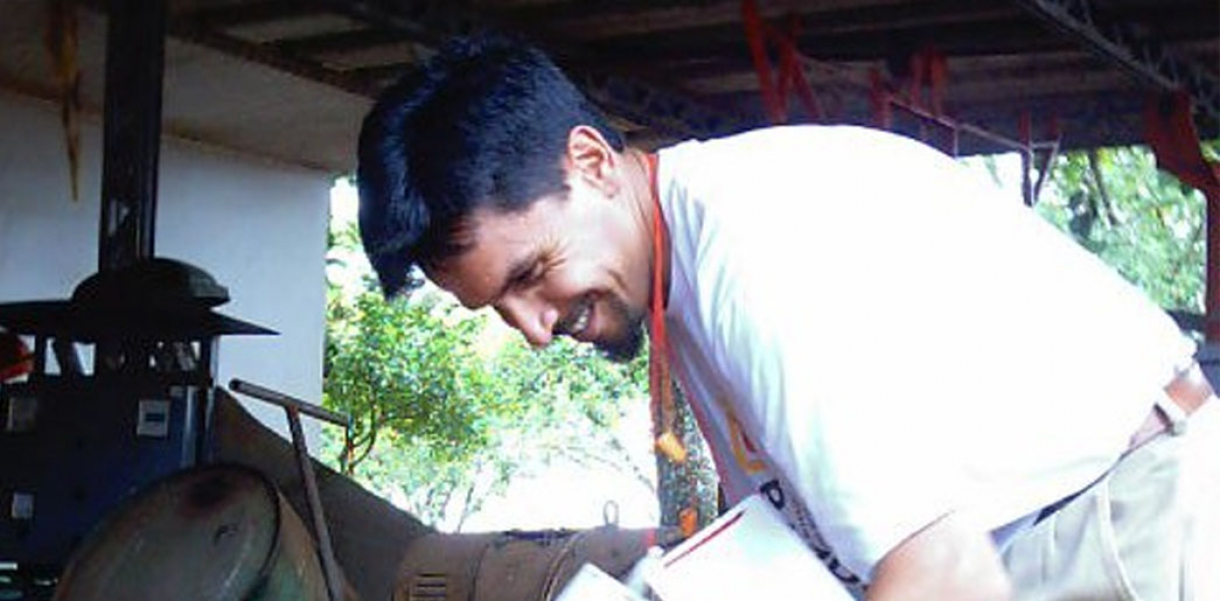The vOICe design consists of a small camera hidden inside sunglasses, a video capture device, a small notebook PC in a backpack or on a belt, and stereo headphones. The deliberate use of commercially available hardware components is supplemented by The vOICe software for converting live video into audio
Functionality and use of design
The vOICe design provides the blind user with live visual input from a head-mounted camera by capturing and converting this live video on-the-fly into closely corresponding "visual sounds" that convey the visual content. The blind user learns to mentally interpret the complex sounds as visual views.
How did this design improve life?
Blind people obviously cannot see, but usually they can hear! So if blind people could learn to mentally reconstruct the visual content carried by these sounds, then they might be able to "see" through sound. Everything has its own unique sound, and once you learn the principals involved you can know what you are seeing. Comparing it in terms of difficulty to learning a foreign language, Meijer hopes that in the long run, users will become more fluent in the mental translation so that it becomes more like natural perception, without conscious effort.
This knowledge converted into the design of the vOICe enables blind people to see, thereby bringing them the gift of a new sense they have formerly been forced to live without. Being able to see on their own provides the formerly blind people an independence and freedom they have never experienced before in their life. Thus, the vOICe is revolutionary for blind people and might even give them a feeling of being more complete.
Drawbacks of life improvement
Acquiring or restoring vision does not necessarily contribute to happiness. In fact, there have been reports about blind people who had their natural eyesight restored through surgery, and whose lives were disrupted through this change. It is conceivable that synthetic vision can have similar negative effects, such as depression, depending on a variety of psychological factors, including personal attitude towards change.
It is unknown if there are long-term negative side effects from using The vOICe, other than the possible risk of hearing damage if the visual sounds are played too loud for prolonged periods of time. Still, one can never be certain that there are no detrimental side effects due to the relatively large-scale brain reorganization involved in learning to see with sound. So far, no such side effects are anticipated or reported.
Independent access to vision through dependence on a certain technology can be a source of concern if continued availability of this technology is not guaranteed. However, the core image to sound mappings used by The vOICe are well-documented and published in the open literature, such that the (unrefined) technology could be easily revived in case the current source disappears. Much will depend on whether there is a sufficiently large user base to warrant the cost of (re)development and user support: the blind community only makes for a fairly small market in which it is very hard to sustain an advanced assistive technology on a commercial (profitable) basis without some form of government support.
You can also mention the basic inconveniences of carrying hardware around, but isn’t it better to be able to see?
Research and need
Basic research into converting video into audio for the blind started in 1983, leading to a dedicated hardware prototype and a publication in a major scientific journal in 1992.
In 1998, a first draft software implementation became available for use on a regular notebook PC in combination with a regular web-cam and headphones. Since then, many refinements and extensions have been added to the integrated software to achieve the best possible user experience. In 2001, the decision was made to assemble a first version of the currently preferred setup with video sunglasses that unobtrusively contains a hidden camera (appearance is very important for blind people too: they generally do not want to "look" blind).
This version was designed in a direct cooperation between developer of The vOICe, Peter Meijer in The Netherlands, and a blind pioneer user, Pat Fletcher in the United States, who has been a key contributor to the design of the setup that involves video sunglasses.
Peter Meijer produces and distributes the vOICe Learning Edition Software for use with this design and also provides recommendations for hardware choices and user support. Hardware components for the actual setup are delivered through independent third-party sources. The design is highly modular, and many combinations of commercially available hardware can be used in individual trade-offs between factors like cost, size, weight, ruggedness and convenience.
Designed by
Peter BL Meijer - The Netherlands






